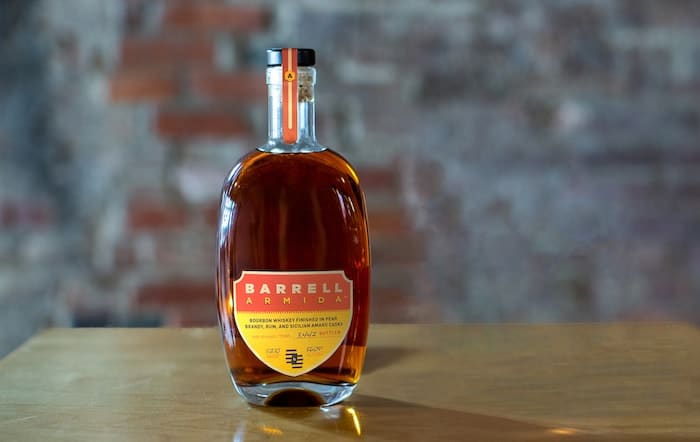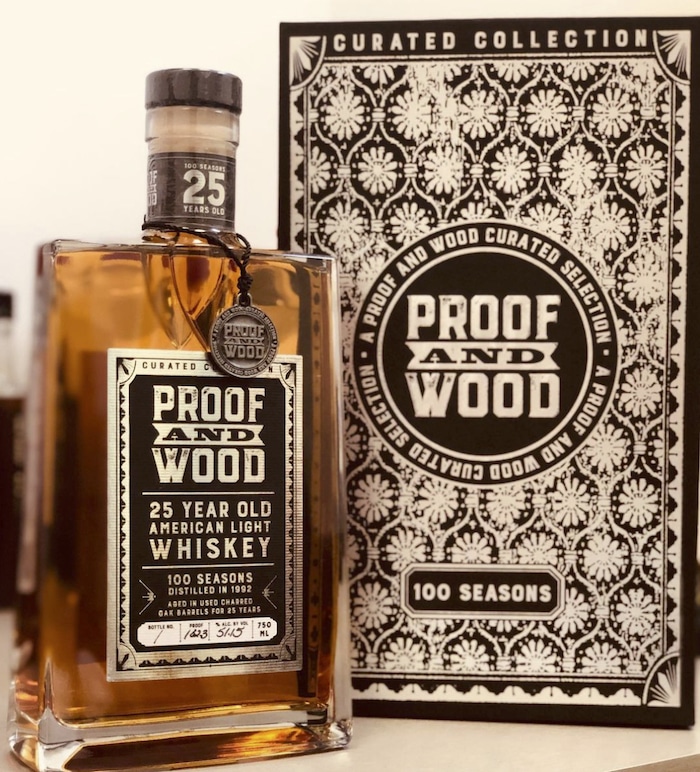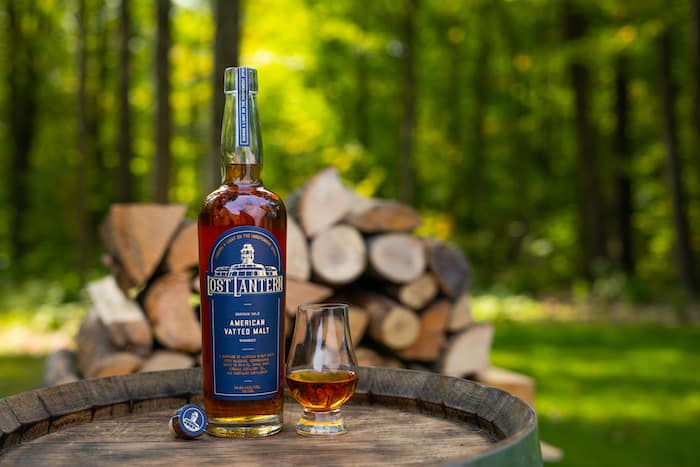In the world of whisky, Independent Bottlers (“IBs” or “indies”) have been part of the consumer landscape for more than a few decades. Going back further, the Scotch whisky industry was built upon a 19th century middle layer of merchants and traders who were the commercial tier between the Highland distillers and the Lowland blenders, the oldest among them being the venerable Cadenhead’s in Aberdeen followed by the Gordon and MacPhail Company of Elgin, Scotland. Their peers in Ireland were W&A Gilbey’s (bottlers of the original Redbreast), JJ Corry and Wm. Cowan. All started their enterprises as importers and negociants of wine, ports and brandy as they moved into whisk(e)y.
But the last forty years have released a torrent of indie bottlings, starting with the old Flora and Fauna releases from UDV (the precursor to Diageo); through MacKillop’s, Duncan Taylor, Signatory, Classic Cask, Black Adder, Dun Bheagan and the Scotch Malt Whiskey Society, to name a few. In all cases, the tradition has been a curated, middle tier of merchants.
The Independent Bottler (IB) is not an entity with an agreed upon definition, and with enough resources, anyone can get into the game with no background in the business. The term lately, however, does come with some built in assumptions: it’s typically an independent entity (company or person) that buys casks of aged whiskies (mostly Scottish malts) from either a registered distillery warehouse or broker; it’s done with the intent of reselling the liquid to the consumer in a somewhat unadulterated form, with little to no processing (blending, chill filtering, coloring) and typically at barrel or cask strength.
Additionally, the transparent display of the cask’s provenance (distillery, distillation/bottling dates, bottle number, etc.) on the label is a prominent feature. The whiskies can range from obscure blender’s malt distilleries like Blair Athol, Linkwood or Dalhuaine to the last drops of closed distilleries like Cambus, Auchroisk or Rosebank; to better known distilleries like Aberlour, Highland Park or Macallan that also offer their own versions, known as Original or Official Bottlings, or just “OBs”.
As the advent of the 21st century brought with it an explosion of micro-distillers around the world, as well as increased output from heritage distillers, it was inevitable that some form of “new” independent bottler would take shape, this time focused on American distilleries. These US-based versions, however, are following more of a mixed path, some in Scottish tradition and others striking out in new ways. In all cases, they’re balancing the virtue of transparency and innovation with the need to build a widely accessible brand.

Barrell Craft Spirits
Former advertising exec Joe Beatrice started Barrell Craft Spirits in 2013 with a focus on American sourced whiskies, starting with bourbon. He had the novel idea of removing “product consistency” (but not product quality) from the vocabulary of drinkers and consequently, his barrel strength, batched releases are esoteric in nature and ever changing. He was straddling between two realities: one, that he would never be able to contract enough liquid from one specific source to match the growth projections he built; and two, that consumers are always looking for something new. Beatrice appreciates the more artful moniker, “merchant bottler” as it lends itself to the idea of an arbiter of quality while allowing him to engage what has become a signature of Barrell Spirits – blending.
“We like blending, this is the arena we play in,” says Beatrice, and indeed the success of the brand (“we now sell out every batch”) is a testament to this approach. As built into the original plan, and as they acquired more assets over the years, their palate has become more diverse, with different ages and mashbills to work with. While their private release bourbons are straight bourbons (with no additives introduced from additional wood influence other than the original barrels), their Armida line of American whiskies are subject to a variety of wood finishes, from rum to amaro to pear eaux de vie. His team tests hundreds of finishing combos and when they find the winning combination, it gets bottled for immediate distribution and notoriety.
Barrell Craft Spirits has a significant collection of layered, rich rum releases (“they’re not the ‘next bourbon,’ but those drinkers appreciate their esoteric nature”) that are being developed through blending along with an extensive array of wood finishing, from amaro to sherry to Armagnac. However, his most audacious line is what he calls “American Vatted Malt.” Taking his cue from the old Scottish practice of blending only single malts together (brought to the modern era by Compass Box and Duncan Taylor) Beatrice is working with the growing segment of American craft distillers who are discovering the joys of single malt barley distillations. His first release brought together craft distillers as diverse as Balcones, Del Bac, Sante Fe and Kings County distilleries, each with distinct flavor styles that posed a challenge to their blending acumen.
But from a company that prizes and has been successful with innovation, it’s a match that promises to open up the collaborative efforts of distiller and blender to the fortunate palates of whiskey lovers everywhere.

Proof and Wood
Industry vet Dave Schmier scored a big hit with the introduction of Redemption Rye in 2010 and helped introduce the whiskey world to a hitherto unknown sleeping colossus: the old Seagram’s distilling plant based in Lawrenceburg, IN, now known as MGP. The ripened barrels of Pennsylvania style rye (95% rye/5% malted barley) that were the house style were gathering dust since the fall of the House of Seagram’s in 2000. While there was at that time no real concept of “sourcing” from an old giant to create a new brand, he and his partner started to buy some of the barrels and blended them to what became the Redemption style.
“By 2010, MGP wasn’t ‘giving away’ older honey barrels” as competition for them was growing (i.e., Bulleit, Smooth Ambler, High West, Templeton and others), but their idea was more in the line of creating a brand that was good whiskey for a good price. “In the beginning, our thinking wasn’t that evolved, we were more entrepreneurial,” but his previous experience in the marketplace taught him where to go and who to see. From that evolved one of the early breakout successes of American merchant bottlers.
After selling Redemption to a larger company, his new company Proof and Wood was developed to further the idea that control over the final product is in the ageing and proofing of the spirit, not the distilling. While also importing some brands from abroad, the focus returned to sourcing from MGP and other American distilleries to create what Schmier describes as “table whiskey.” That was the birth of Deadwood, a decently priced and enjoyable everyday bourbon blend.
Following that, a limited series of single barrel bourbon and rye whiskies with a “governmental” theme: The Senator, The Ambassador and the President (this one in 4yr and 8yr expressions), each an age statement expression at barrel proof. Not to rest there, he introduced Tumblin’ Dice, straight bourbon whiskies in two styles, either barrel proof or at 50% ABV, each with a high rye mashbill. All of them follow the Redemption lead of showing MGP as their source on the back label (as now required by law) but each establishing their own brand consciousness on the front.
However, Proof and Wood just recently broke into a completely different realm that at once is exciting and treacherous. Through long term relationships with barrel brokers, Schmier accumulated an entire range of whiskies, from corn whiskey to light whiskey to decades old bourbons and ryes (“four barrels fit into a 5 gal container”). And out of that came a new expression that could be a tipping point.
Knowing that the word “blended” had negative connotations among some consumers, in late 2020 Schmier released Vertigo, described as Extraordinary American Blended Whiskey. An American blend is different from its Scotch and Irish counterparts in that it can contain grain neutral spirit, a la Seagram’s Seven. However, Vertigo is a blend of American bourbon, rye and light whiskies. The light whiskey component is what makes this special and unique, as it qualifies as whiskey but distilled in a column still to a higher proof and aged in used barrels, much like its grain whisky cousins in Scotland and Ireland. In this case, it has been aged 25 years and the “extraordinary” amount of time in a used barrel brings a creamy and fruity quality to blend with the more intense bourbon and rye. This “blast from the past” is straight out of the old Seagram’s playbook with a decidedly modern angle.
When asked how he knows the barrels are ready for blending, Schmier replies, “the whiskey will tell me.”

Lost Lantern Whiskey
The husband and wife team of Adam Polonsky and Nora Ganley-Roper had a long term vision of where the American craft whiskey world was going, he coming out of the whiskey press and she from liquor retail. So they embarked on an eight month road trip (complete with an IG account) that took them to over 50 distilleries across the US to discover the range of American whiskey distilling. Forty more have since been visited. From that has come Lost Lantern Whiskey, probably the closest relative to the august Scottish independents mentioned earlier (they liken themselves as an American Signatory, described by Polonski as a “beacon of transparency.”)
Their first releases are single cask expressions from four of the distilleries they visited: Santa Fe Spirits Single Malt (NM); Cedar Ridge Bourbon (IA); Ironroot Republic (TX) straight corn whiskey; and New York Distilling’s (NY) straight rye finished in apple brandy barrel. Like their Scottish inspirations, each expression is presented at cask strength. The labels hold a plethora of geeky facts, including mashbill, quantity, strength, barrel details and age. All of the expressions are presented as non-chill filtered with no color added. Each label is headed by the Lost Lantern logo.
This is the first time a merchant bottler has dedicated itself to exclusively bottling American craft whiskies and Polonski and Ganley-Roper, in their first releases, expose the breadth of styles available. However, just as in Scotland (and with our 2 other examples above), there’s a temptation to take a decidedly more creative angle than just picking a great barrel. And in this case, creativity was matched with a logistical cleverness.
The team contacted six distilleries (Balcones, Copperworks, Sante Fe Spirits, Triple Eight, Westward and Virginia Distillery) and met at the American Distilling Institute’s Denver Trade Convention in 2018. Each distiller brought barrel samples, with a total of thirty-five samples evaluated by the entire extended team. After a marathon day at the convention, tasting, comparing and blending together, the group selected a twelve-barrel blend of all their best single malts, two barrels from each distillery. The result is Lost Lantern’s Vatted Malt Edition 1. At 105 proof and minimum two years old, there were 3000 bottles produced for sale and distribution. The Lost Lantern team are planning a release of a new cohort of single casks per quarter, all from distilleries they personally have visited and know. And the vatted malt will continue to be produced, each one from a new selection of participants.
The list of American IBs is not a long one, but with over 1,800 distilleries producing aged spirits, it is sure to get larger. Newcomer Gene Nassif started up Obtainium Whiskey in Iowa with the goal to “source, not age” and present the same kind of transparency as others listed here. He’s working with some aged light whiskey from MGP as well as “more interesting stuff” like an eight year Polish rye. Nassif is creating some bourbon rye blends, ala High West’s “Bourye” and has some products going out under the Nassif Family Blend label in nearby Minnesota.
Industry veterans Joshua Hatton and Jason Johnstone-Yellin of Single Cask Nation, meanwhile, began with a passion for Scottish single malts and that has been the mainstay of their IB business. They’ve had some forays into American whiskey, with a few key releases from both Wild Turkey and MGP. However, their goal is to focus on the provenance of the distillery and its whiskey, “showing new flavors but highlighting the barrel” and show a side of the distillery that it may not be able to with its origin brands. To that, they discovered the idea of IBs to be foreign to most well-established American distilleries with a good stock of aged assets, noticing that instead of wanting their distillery name on the label, they want it hidden in the product.
On top of that, because of the demand on (mostly) Kentucky’s distilleries, the prices have become prohibitive and even MGP is not signing new contract orders that aren’t “lay down,” meaning one must buy the new make from them and let it age at their facility until bottling. So for the most part they’re working with Scotland and Ireland and world distilleries in India and Israel.
The one point all agreed on is that the general public needs to be further educated on what an Independent Bottler is and does and why it’s worth their money to invest and investigate one of their bottles. And all one must do to verify this is watch customers at a well-stocked liquor story survey the offerings on the wall. The amount of information on an IB label may be catnip for the true whiskey aficionado, but to the general consumer, it translates to confusion and doubt, and many times you will see a customer pick the bottle up, scan it, then lay it down and choose the original bottling from the same distillery.
Perhaps the answer lies with what has been trending across liquor stores in every state, the store pick. In this case, the spirits buyers or proprietors pick a specific barrel from a well-known distillery, mark the label as “Bottled exclusively for Our Store”, and offer it for sale. In this way, owing to the store’s reputation (and increasingly in bars), the bottle is deemed “safe” for the general public to buy with confidence. But curating has a long, well-regarded consumer history of trust, it may just take a while to establish a brand. After all, who doesn’t trust Martha Stewart?









